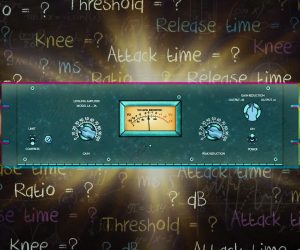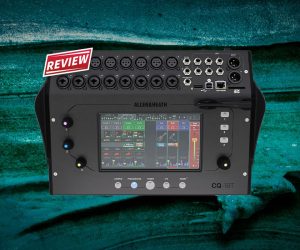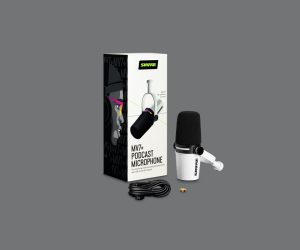
Grand Actions
Craig Field jumped at the chance to record an Australian-made 9½-foot, 102-key Stuart & Sons grand piano, despite it being in a farm shed under the critical eye of founder Wayne Stuart.
Story: Craig Field
I first met New Zealand-born score composer Alan Griffiths and Ukrainian-Australian concert pianist Evgeny Ukhanov when they both came up to record in my Blue Mountains studio with high hopes. Hopes I’d helped raise. They’d had a number of very disappointing experiences in studios around Melbourne when trying to record their body of classical compositions for solo piano. Alan sent the files to me to have a listen, and I was quietly confident we could do better. At the time an arts trust had installed a Steinway Model D concert grand in Underwood Studio’s main room, and I assured him we could do a far better job with our Steinway and studio combination.
Boy, did I eat those words.
A piano’s sensitivity, touch and ability to communicate its rich harmonic vocabulary comes from the culmination of all its 12,000 moving parts working together harmoniously. Crucially, the piano’s ‘action’ — its hammers, keys, and how the two combine to strike the strings — is the pianist’s key to unlocking that vocabulary. The Steinway we had at the studio had three prepared actions: one for predominantly classical players, one more modern (Wessel, Nickel & Gross) action for jazz and other projects, and one premium action awaiting the likes of Mr Ukhanov!
The day finally came for our first session and the wonderful Steinway Model D — King of Pianos! Lord of Sound! — with its new premium action meant for the silver fingers of Mr Ukhanov… stuffed up. Yep, it totally stuffed up. The technician had forgotten to make a few crucial adjustments to the new action and as Evgeny tried to play, the piano continually did not strike or struck too much. Slowly Alan Griffiths, patient saint of a man that he is, began to lose his sense of humour. The piano needed adjusting after almost every other take and by the end of that first day we decided to call the whole thing off.
SECOND CRACK
Over dinner that night, after a few drinks lifted the pressure and disappointment, a friendship was formed through the day’s adversity. Alan and Evgeny later listened back to the recordings I had made and agreed they sounded a great deal better than what they had, even though the actual performance takes were unusable.
Thankfully, life’s always offering second chances.
Five months after that disastrous session, I was pleasantly surprised to receive a call from Alan. Soon after, I was heading a few hundred kilometres west of Canberra at daybreak to record his work Introspection, again with Evgeny. This time on a 91/2-foot 102-key hand-built Stuart & Sons concert grand. There was one catch: the piano was located on a farm in a huge tin shed. How Aussie can you get?
“Oh, and Mr Stuart wants to meet you,” Alan said. “He wants to sit in on your recording setup and watch what you do. Seems he really dislikes sound engineers as they always mess up his pianos in recordings!”
It’s not something we as engineers or producers often get to experience; the instrument maker leaning over your shoulder while you try and capture an image of their creation. I was a little nervous, for sure.
FARMING OUT THE WORK
The farm was a spectacular 500-acre property and the owner, artist Peter Crisp, was very amiable and excited for the recording to happen on his property. Alan wasn’t understating it; the shed was just a shed. The piano had some boards placed behind it, but whether they helped with the overall sound is doubtful.
Once the team had all arrived, Mr Stuart took some time to talk to us about the piano. He took Evgeny through its range and explained the fourth expression pedal, which can be used to catch additional harmonics in phrases if used correctly. It also has 102 keys instead of the usual 88.
After the rundown it was over to me.
When it comes to miking up fine acoustic instruments — whether live, location or studio — my first move is to listen to the instrument and allow that sound to linger in my thoughts. It’s important to have a clear mental image of the sound you are hearing as it is in the space. At times, I could sense the others waiting for me to actually do something, but you need to put that out of your mind and focus.
In my studio I have my desk and setup in my main room, similar to Paul Epworth’s setup at The Church. I’m not separate from the performance or the artist and I find it’s a good thing. I’m sure of what I hear in a performance by getting it direct, and therefore know exactly what my recordings need to translate. Likewise, on location I want to be close to the action without interfering.


CREATOR DIFFERENCES
Because there’s so much detail in the design of a grand piano I find its best to mentally divide the instrument into three elements: performance, sound and interplay.
Performance is the transferral from the artist into the instrument via the keys and hammers striking the strings.
The sound is just that, the sound. If you listen within the instrument you will find its decisive centre. Fine pianos like the Stuart & Sons have no discernible crossover between ranges, though if you listen closely you will find an area on the sound board where the top and bottom seemingly — and seamlessly — meet. Try and focus on that centre sound.
Interplay is the space away from the piano where both those sounds meet. Depending on the environment, there may be a number of places that interplay occurs.
As I began to make decisions Wayne Stuart, the owner and maker of the piano, stepped in.
“No, no, no,” he said, as he started directing me with his experience of mic placement. “Listen, this is what we’ve done previously in the studio.” This man knows a thing or two about sound, so I let him shuffle me here and there for about three hours. We tried different mics in different places, and then made sample recordings and listened back.
It was a very respectable setup, with an Earthworks PM40 PianoMic internal bar and a spaced pair of Earthwork QTC50 omni microphones. Earthworks microphones are amongst a handful that can respond to the substantial frequency range of a grand piano this size. It also makes a great deal of sense to have a smaller diaphragm surface area that will respond to sound and pressure then return extremely quickly to its original position. We also tried spaced pairs of Neumann KM84, AKG C451 and Beesneez Lulu Fet cardioid condensers, as well as a pair of Earthworks QTC 40 omni condensers. I have a late ’60s pair of Neumann KM84s I like to use in the studio, but the later model ones I had on this job didn’t really work, as they seemed to have a slight 400Hz build up that distorted the image of the piano.
Each time we tried a new arrangement Wayne seemed to be getting closer to a sound he was happy with, but I had a feeling that we could do much better. I decided to speak up after many hours of fussing and many takes, which is always tricky with an experienced client.
“I think we can do better,” I said.
There was silence, then relief. See, Wayne is the kind of man who has relentlessly pursued excellence, so rather than hurting his pride, those words brought him joy. I went about a whole new setup and about four hours later we had our new sound; one which everybody agreed was more faithful to the sound occurring at that moment in that space. Until then, Wayne had predominantly been exposed to spaced pair setups. It was the first time he’d both had the pleasure of working with ribbon microphones and had an engineer attempt to capture his piano with a Blumlein pair.
In our final set up we kept the Earthworks PM40 pair over the hammers to capture the ‘Performance’ aspect. We complemented that with a pair of Royer 121 passive ribbon microphones in a Blumlein stereo setup to record the ‘Sound’ and a pair of Rode NTR active ribbons in a similar Blumlein pair for the ‘Interplay’.
The extremely fine corrugated aluminium strip of ribbon microphones makes them so unique. By having such a low mass diaphragm, they can respond to very subtle changes in sound pressure. Ribbon microphones naturally exhibit a bi-directional pattern, and while many multi-pattern condenser microphones can arrive at a similar pattern, the use of complex active electronics to achieve bi-directionality can impart noise, distortion, and undesirable off-axis artefacts.
Because of the environment, I didn’t stray too far from the piano to avoid collecting unwanted sources. That’s where the Blumlein technique has an advantage. Because bi-directional microphones are heavily beholden to the influence of proximity effect — tending to lose detail in the lower frequencies the further they get from the source — they normally give optimum results when used at closer distances to the source. When it comes to mixing Blumlein mic setups you can tune the lower frequencies by gently adjusting the panning.

HUMMING ALONG
The piano was such a large instrument, and if it had occupied a more controlled environment I would likely have tried omni microphones in a Decca tree configuration. However, when things are less than ideal you really need to keep positive and steer the project in the direction you want to go. Attempting to ‘fix’ recordings in the studio is never a good idea, so I had to accept and embrace the imperfections of the environment. It was a far cry from the controlled rooms and customised silence of my own studio, so I had to set the microphone gains to not only respond appropriately to the piano and performance but also avoid too much ambient interplay.
Being a farm, beyond occasional visits from resident animals there were a number of obstacles I had to contend with. A water pump on the farm seemed to sporadically switch on and create a hum in the electrical lines. With a bit of vigilance during the sessions I noted the times it switched on and off, and by the third day I was able to organise discussions and review times around its routine. Occasionally the farm workers would come by on a bike or tractor to stop in and see how the recording was going. Which it usually wasn’t by the time they poked their head in.
I won’t deny I was stressed at times trying to capture such a large score of complex material with technical problems, deadlines and all those interruptions. Nevertheless, it’s not an experience I would have traded. However unusual it was to record a concert pianist in a tin shed, being outside of the studio environment was a unique and rewarding experience for Alan, Evgeny and myself. The Crisp family’s hospitality, and sharing our space with the sound of the surrounding 500 acres of farm and nature, helped create a truly great living and work environment. The Australian-made Stuart & Sons piano seemed right at home as its magnificent open sound echoed the almost endless landscape.
Thankfully, it went better than the first session. Even Wayne Stuart agreed, who sent me this note:
You have achieved extreme clarity and dynamic range without harshness or a too metallic tendency. It really is quite impossible to achieve this level on any other piano and not get harshness of all sorts. The subtlety/flexibility of the sound envelope is unique.
Thumbs up, Wayne Stuart.
More information on pianist Evgeny Ukhanov can be found at www.evgenyukhanov.com
More information on the composer Alan Grifitths and the album Introspection can be found at www.griffithscomposer.com
















RESPONSES